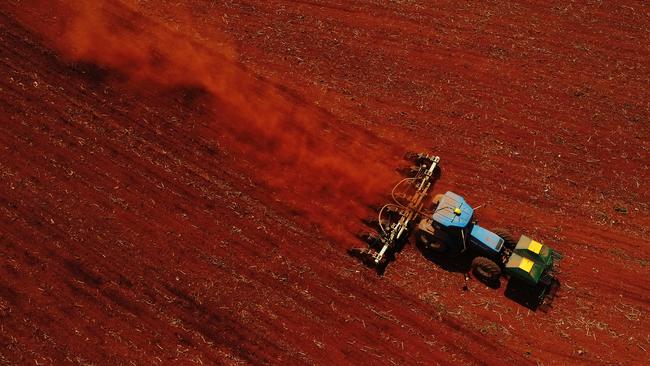La Nina forecast to drive rise in winter crop planting
Despite a mixed start to the season Australian farmers are expected to increase winter crop planting on the back of expectations of a La Nina-inspired recovery in the west.

Despite a mixed start to the season Australian farmers are expected to increase winter crop planting amid expectations of a La Nina-inspired mid- to late season recovery in the west.
Farmers are set to plant 23.55 million hectares of winter crops this year – up 3.6 per cent on 2023, according to specialist agribusiness bank Rabobank.
Its 2024-25 Australian Winter Crop Outlook said the increase in planting was being driven by a positive outlook for NSW and Queensland and overall better margins, year on year.
The report’s author, Rabo Research analyst Vitor Pistoia, said while overall planting was expected to be up, total Australian production of grains and oilseeds for 2024-25 was contingent on the expected onset of a late-season La Nina weather pattern in the second half of the year.
“It’s currently a tale of two coasts, at least for the season’s start, with strong early sowing in the east, but a dry start in the west,” he said.
The bank expects total crop production to be near average for the 2024-25 winter season, on the back of the forecast La Nina and the dry start in Western Australia and parts of South Australia and Victoria.
“Assuming a tough start for Western Australia, South Australia and western Victoria, with a mid-to-late season recovery following better rainfall due to La Nina, we forecast overall production for winter crops will reach 46.3 million tonnes,” Mr Pistoia said.
Rabobank said grain prices were likely to hold firm in the year ahead.
Mr Pistoia said the 2024-25 season was likely to mark the fifth consecutive season of dwindling global ending stocks for wheat.
“Dry weather and frost in the Black Sea region has tilted the supply and demand balance for wheat towards a positive price cycle,” he said.
Rabobank forecasts APW (Australian Premium White) port prices for wheat to range between $360 and $390 a tonne by the harvest time – to be adjusted in light of global weather effects on wheat production.
For barley, prices are likely to be sustained by improved cattle prices and red meat export opportunities.
The report says prices for feed barley during harvest time are on track to be in the $350 to $370 a tonne range for east coast ports and $320 to $340 a tonne for Western Australia and South Australia.
“The price difference is due to WA and SA’s larger barley export profile, which means barley from these states will be competing with cheaper corn on global markets,” Mr Pistoia said.
Based on Rabobank’s base case production forecast – and not including carry-over stocks from previous seasons – Australia is expected to export 19.8 million tonnes of wheat, 3.9 million tonnes of barley and 3.6 million tonnes of canola from the 2024-25 winter crop harvest.
Mr Pistoia said current higher freight rates for exports – due, in large part, to the ongoing Houthi attacks in the Red Sea “shattering” global trade routes – had the potential to ease by the end of the year.
“All else being equal, by the end of the year, freight rates have room to become a little softer as risk premiums fade,” he said.
“Unfortunately though, trade wars, tariffs and sanctions are key topics for 2024, so volatility is almost certain.”







To join the conversation, please log in. Don't have an account? Register
Join the conversation, you are commenting as Logout